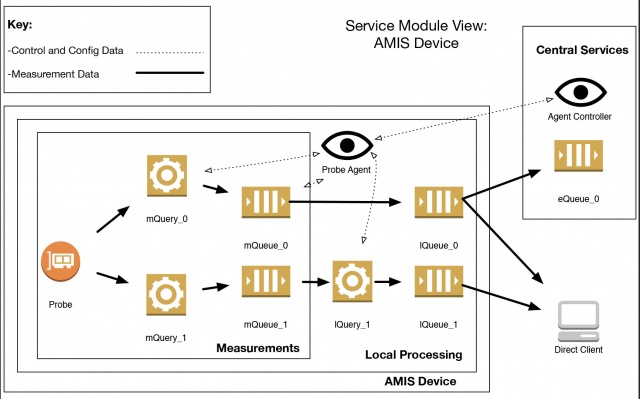Plugin Management
Overview
Network measurement is performed through observation of traffic from monitored sources. Due to the volume of raw data, applications must process traffic near sources of data generation or exchange. The Plugin Management system provides methods to manage distributed measurement tasks and resulting output data. We make use of the Cresco Framework [1] for agent and plugin management.
Features
- Provide a global view of state of devices, processes, and data flows in distributed environments.
- Provide centralized configuration management for distributed resources.
- Provide abstract methods to develop, deploy, and maintain distributed applications and related data flows.
- Employ edge computing techniques in network measurement.
Status
- Improved distributed control-plane communication
- Improved number of possible agents in network
- Improved resiliency of agent network
- Generalized task (plugin) scheduling
- Providing distributed location-based scheduling
- Developed Docker Container Plugin
- Developed backend (Cresco) dashboard
- Providing device resource utilization
- Providing container resource utilization
- Up to four Netflow streams aggregated at UK
Agents and Plugins
A single agent with one or more plugins runs on each AMIS device. A plugin instance and related configuration parameters are deploy for each measurement tasks. An example of plugin management on a device is shown in the figure below:

One or more capture devices can used together for distributed measure measurements. Agents and related plugins are coordinated through a central controller as shown in the figure below:

Notes
- V. K. C. Bumgardner, V. W. Marek and C. D. Hickey, “Cresco: A distributed agent-based edge computing framework,” 2016 12th International Conference on Network and Service Management (CNSM), Montreal, QC, 2016, pp. 400-405.